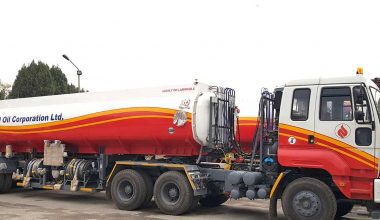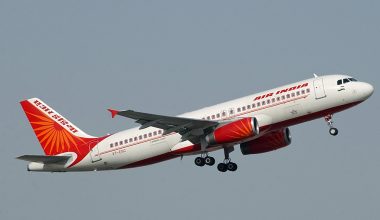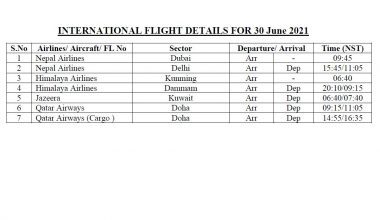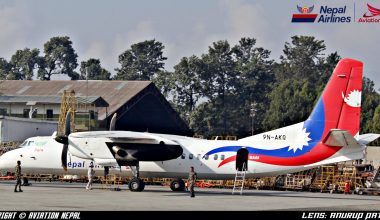A flying profession is a lofty career that offers plenty of travel opportunities to exotic places and more-than-sufficient income to lead a sophisticated lifestyle. However, a pilot career is not a cup of tea for everyone due to the significant time and effort involved. Besides a substantial financial investment, you must make a remarkable time commitment to become a captain. How long does it take to become a captain in an airline? Let’s investigate further.
Type of flight operations
In an attempt to determine how long a pilot takes to become a captain, it is critical to keep in mind that the answer differs according to the type of flight operations. The type of pilot you aspire to become makes a significant difference in the time it takes to become one.
- Non-commercial flight operations
If you hold a private pilot license (PPL), you can act as pilot-in-command/captain of non-commercial flight operations to fulfill your personal flying needs. It will take at least three or twelve months to complete the private pilot training. Furthermore, you must log in aeronautical flight experience of 40 hours which consists of 10 hour-solo flight time. Remember that as a private pilot license holder, you can act as a captain in those aircraft for which you are appropriately rated.

It will take a minimum of 3 months to earn a private pilot certificate and perform the role of a captain to maneuver a single-engine airplane solo. Usually, it’s a matter of six to 1 year, but for those who fly once in a while, becoming a private pilot captain could take a couple of years.
- Commercial flight operations-Flying professionally.
Suppose you wish to take your aviation career to the next level and fly professionally. In that case, you must earn a commercial pilot certificate to act as a captain or pilot-in-command for any commercial flight operations. Commercial pilot certificate training is available only to those with the private pilot license and typically takes six to 12 months to complete.
To get legally paid as a captain of an aircraft, you must meet the minimum aeronautical flight experience requirement of 250 hours. Starting with zero experience, it will take over six months to get the commercial pilot certificate allowing you to transport passengers and cargo, operate flying tours, banner towing or crop dusting, etc.
While CPL permits you to act as a pilot in command of a single pilot aircraft, this qualification isn’t enough to fly large aircraft transporting passengers on a major airline.
- Regularly scheduled passenger flight operations
You must earn Airline Transport Pilot License (ATPL), the highest pilot certificate obtainable to operate regularly scheduled passenger flight operations. With an ATPL, you are legally certified to begin your professional pilot career and eligible to fly for an airline. It will take a minimum of two years for a motivated pilot to complete an ATP pilot certificate. Besides, it is mandatory to satisfy FAA’s flight experience requirement of at least 1500 hours before earning an airline transport pilot certificate.
How long does it take to become a pilot captain in an airline?
Airline Transport Pilot License (ATPL) is required for any pilot to pursue the role of Captain in a commercial aircraft. The position of an airline pilot captain is earned over an extended period and isn’t something you instantly jump into straight out of flight school.
It will usually take three to five years to get an ATPL. You must work your way up the experience ladder to log in the flight time requirement specified by civil aviation authorities. While the ATP license remains the highest level of pilot certificate obtainable, it still is the bare minimum requirement to work as a pilot captain in any airline.
The ultimate goal for any beginner pilot is to become a senior captain for a major airline. Still, unfortunately, there is no common number of years involved in becoming an airline pilot as it varies greatly from airline to airline. While regional turboprop airlines normally require a minimum of 2000-3000 hours before considering any pilots for promotion, major legacy or national flag carriers have even more stringent requirements.

ATPL holders often meet the hiring minimums of most regional commercial airline pilot jobs and start their job as first officers or co-pilots. Upon gaining experience by clocking flight hours, they are promoted to regional airline captains. Some airlines promote first officers to the post of Captain within 4 to 5 years upon flying a maximum of 900 hours a year.
Regional airline captains fly between 19 and 70 passengers depending upon the aircraft size, to and from small and mid-sized airports. They usually work toward becoming a senior captain for major full-service carriers at the lofty top of their profession. A captain at a regional airline usually kickstarts his/her career at a major airline by taking up the co-pilot or first officer position. Most major airlines require that captains of their commercial jetliners possess at least 5,000 flight hours, requiring more than six years to reach there.
It is difficult to estimate exactly how long it takes to become a captain as the timeframe varies depending on the airline industry’s cyclical nature and the pilot’s competency.
The cyclical nature of the airline business makes a huge difference in the potential timeframe involved in becoming a captain in any airline. Amid the sudden expansion of the aviation industry, airlines often face a looming shortage of pilots and hence reduce the minimum hours you need to apply for the role of the airline captain. Amid a spurt in travel demand, airlines make an unprecedented takeoff and become desperate for pilots. The airline’s growth during the boom will accelerate moving up your flying profession to the captain-the pinnacle of the pilot’s career.
On the other hand, economic downturns create fierce competition for captain jobs as airlines slow down their hiring process. If you are a new pilot with less experience, you might stay at the same position longer, slowing the path to upgrade to the position of Captain. It’s not uncommon that some pilots take 15-20 years to promote to the post of pilot-in-command for a carrier that doesn’t have a pilot turnover and has a weak economy.

The time it takes to become a captain also depends on the seniority order. The higher you are on the seniority list, the closer you move to the Captain post. The seniority order directly affects your promotion and the resultant flight privileges. Airline seniority is based on how long you have worked in the company, which means the newly hired pilots are at the bottom list.
The pilot’s competency also plays a critical role in the time frame to become a pilot captain in the airline. Apart from hour requirements, the carrier evaluates your training record, overall performance, and skills. As the Captain of the aircraft, you are fully responsible for the passengers and the aircraft, requiring you to safely and methodically work through a couple of scenarios at any given time. Some pilots never get to assume the role of Captain owing to their lack of competency or ‘captain material.
How long does it take to become a captain in Nepal?
According to the Civil Aviation Authority of Nepal (CAAN), a beginner pilot must accumulate a minimum of 1500 flight hours to be promoted to junior captain. Furthermore, the co-pilot must fly aircraft at the discretion of the senior Captain and gain experience under his/her mentoring. Attributing to a spate of air accidents in Nepal, CAAN has revised the aeronautical flight experience requirement to at least 3500 hours to become a captain in a major airline.
Bottom line
The answer to ‘how long does it take to become a captain’ depends on various factors like flight training time, types of operations, nature of the airline industry, seniority level, and pilot competency. The flight training for a private and commercial pilot license takes less than a year, allowing you to act as a captain in private and commercial aircraft. The airline captain is the pinnacle of a pilot career, and pursuing this role can take an uncommon number of years, from 6 to 20 years. Some pilots get the captain role in a minimum of 6 years by beginning their career at a regional airline and working their way up depending on pilot seniority and the state of the aviation industry. In the event of an economic downturn and lack of airline expansion, the number of captain positions is limited; hence, it may take at most 15-20 years to get a promotion to Captaincy.






